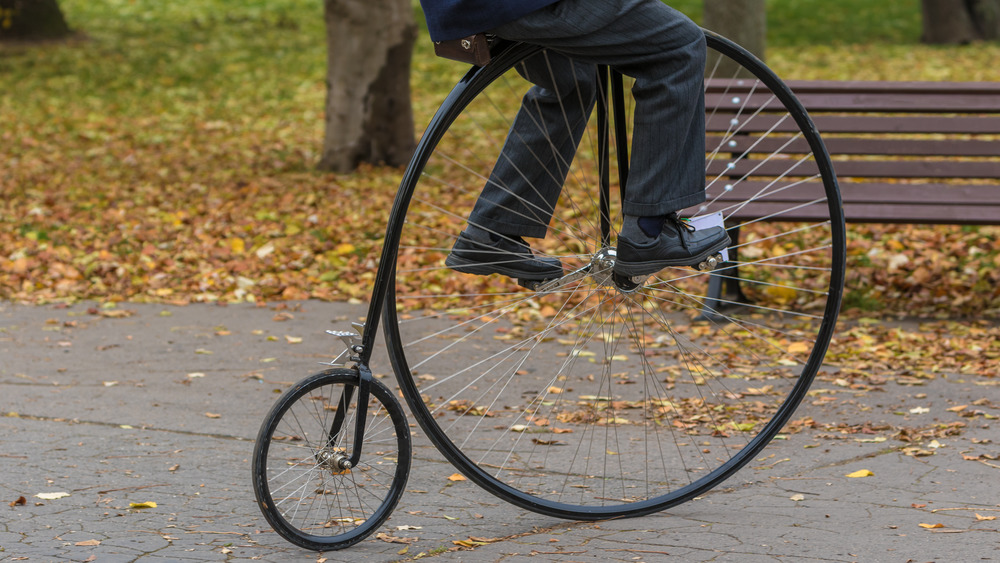When Was The Bicycle First Invented?
We all know that bicycles are not just a fun way to get around, but clean alternatives to cars and other forms of modern mass transportation. They're the preferred way to travel through some of the most energy-conscious cities on the planet, including Copenhagen and Amsterdam, and more and more recently, bike-sharing has taken off in U.S. cities such as San Francisco, Seattle, and Boston (per The Conversation).
Bicycles have come a long way since those old-timey pictures of bikes with giant front wheels and tiny back wheels (called "penny farthings," by the way). Today, there are so many types of bikes: fixed-gear, single-speed road bikes, mountain bikes, hybrids, folding bikes that people carry on buses, electric bikes, BMX bikes for doing tricks. All of these bike variations cater to a variety of needs, and all of them stem from a single, original bicycle that was developed over 200 years ago: the Draisienne, built in 1817 by German inventor and nobleman Karl von Drais (via Live Science). Also in von Drais' wheelhouse (hah) was a four-wheeled version called a Laufmaschine (running machine).
The Draisienne, also known as the "velocipede," "hobby horse," and "dandy horse," had no chains or pedals, and was essentially a wooden beam on top of two wooden wheels. It does win, however, the prototype prize by having handles that you could use to steer, and a bell for alerting pedestrians. It was derided by many at first, but once it caught on, there was no stopping it.
Developed in response to a shortage of horses
Okay, admittedly, Leonardo da Vinci drew the first recorded picture of a bicycle in 1492, in his Codex Atlanticus, as Britannica states, but that guy gets enough credit for being brilliant. And before that, another Italian guy named Giovanni de la Fontana built a four-wheeled version in 1418 that included a rope instead of a chain, it's true. But von Drais gets points for really understanding the whole "invention is the mother of necessity" thing. After all, he was more or less forced to build a bicycle because there weren't enough horses. Reason being? Volcanic ash from the 1815 eruption of Mount Tambora in Indonesia, Mashable explains. Global temperatures fell, crops died, and so did animals.
Even though the Draisienne was built in 1817, it didn't undergo an evolution until the 1860s, when, at the hands of several different French innovators, it was given brakes and chains. Pierre Michaux, in particular, caught the wave of the bicycle craze in 1868 and mass-produced the first wooden, and then cast iron, frames (per Bicycle History). At that point bicycles were still referred to as "boneshakers" because they rode so roughly.
By the 1870s, we entered the aforementioned "penny farthing" era, developed to provide increased stability, although the seat was too high. By then, though, bicycle races and competitions were already all the rage on both sides of the Atlantic. And at present? Over 1 billion bicycles have been sold and enjoyed.

